Mahalabia is a delicious Middle Eastern milk pudding. It comes together in less than 10 minutes, needs only a handful of ingredients, and can be dressed up in several different ways. What more could you ask for?
I’ve always found mahalabia (also known as muhallebi) to be intriguing as a dessert. It honestly wasn’t a recipe I tried a lot as a child. Like many children, I was very partial towards chocolate and super sweet recipes. But what stood out most to me about mahalabia recipes, was the several different ways people made it.
We’re going to go over a few of the different methods in this post as well as some variations and presentation ideas.
Jump to:
What is mahalabia
Mahalabia is a milk-based Middle Eastern dessert. It’s typically made using a combination of milk, sugar, flour, and sugar. The mixture is typically thickened using either wheat starch, cornstarch, or rice flour (not all three! Too much thickener will result in goop).
Flavour is added to mahalabia in two ways: firstly, by incorporation some sort of flavour agent (vanilla, orange blossom water, rose water, etc.); and secondly, through garnishing with toppings like nuts (pistachios are popular), and edible flowers.
Mahalabia is popular throughout the year, but more so during the month of Ramadan (in fact, an English cookbook from the 19th Century refers to the recipe as “Ramazan cakes”).
Origins
Like many traditional Middle Eastern recipes, the actual origins of mahalabia are disputed. Several accounts online state that mahalabia was first created in Persia by a Persian cook for an Arab general – Al-Muhallab ibn Abi Sufra – who liked the dish so much he named it after himself, however the earliest known publication of the recipe is attributed to Ibn Sayyar al-Warraq of Baghdad (Iraq). The Persian origin story popped up in an Andalusian cookbook about three centuries later.
In additions to the above, there are conflicting claims stating that the dessert is actually from Lebanon, Syria, or Egypt.
It seems the only thing anyone can agree on is that it tastes good.
What’s the difference between mahalabia and muhallebi
Basically nothing. Mahalabia is the term primarily used for this type of milk pudding in the Arab world, while muhulebbi is the more common name in Turkey. In terms of flavour, components, and even decoration, they are the same (with minor differences based on the chef’s preferences).
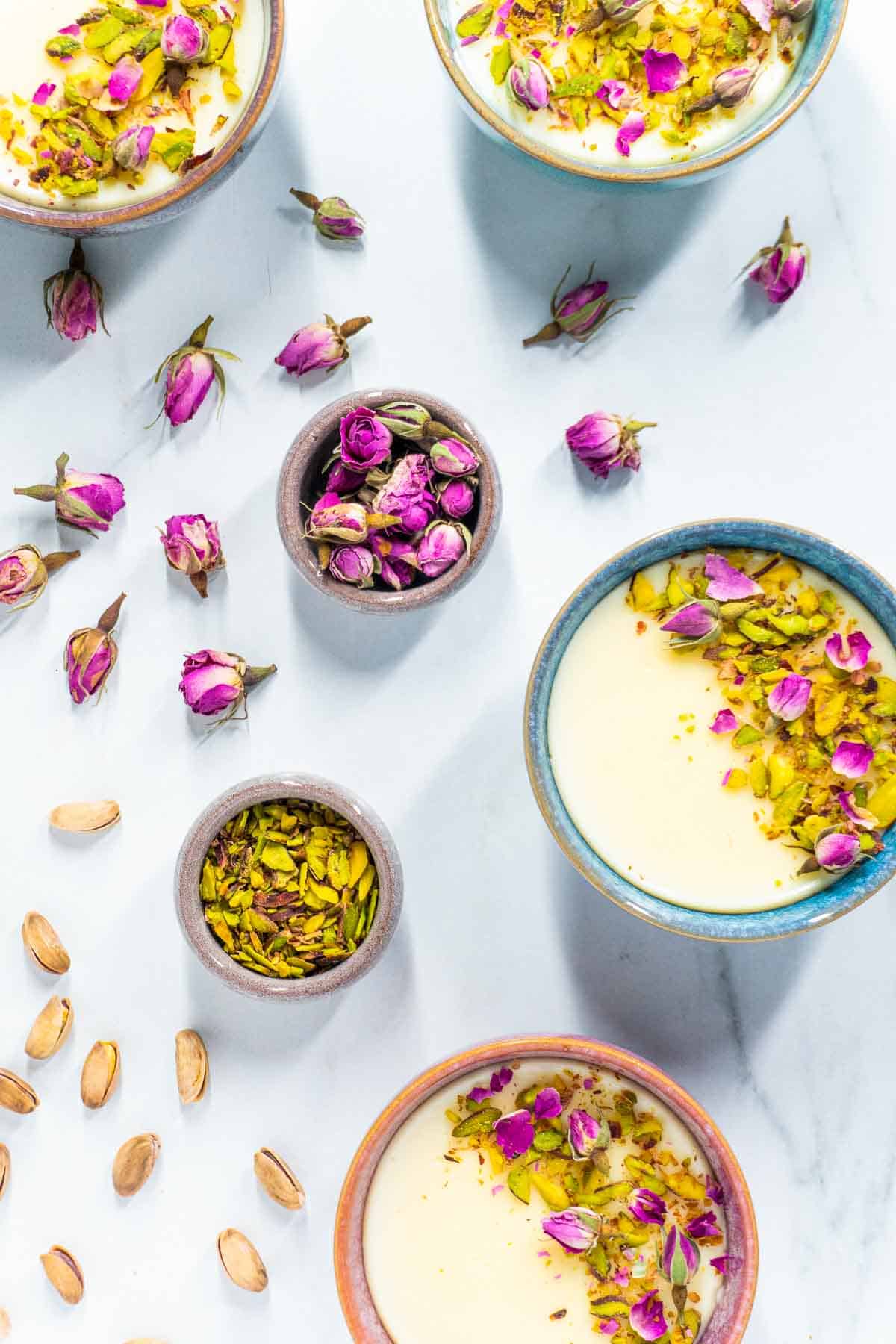
Ingredients
For the mahalabia
- Whole milk
- Sugar
- Flour
- Wheat starch
- Egg yolk
- Heavy whipping cream
- Vanilla extract
For the garnish
- Pistachios
- Rose petals
How to make mahalabia
Mahalabia is very simple to make. Start by adding the milk, sugar, flour, wheat starch and egg yolk in a pot. Stir the ingredients together until mixed (make sure the sugar, flour and wheat starch has dissolved into the mixture).
Over a medium heat, pour in the whipping cream and vanilla extract. Whisk the muhalabia mixture over heat until a smooth consistency and pudding-like texture is achieved, approximately 10 minutes.
Using a ladle, scoop the mahalabia pudding into bowls. And refrigerate for at least two hours (ideally, four). This is where you can garnish using pistachios and rose petals, or really anything you like (suggestions below!).
Serving suggestions
I recommend opting for individual servings that have been pre-scooped into small beautiful bowls (or cups). Alternatively, create a serving station where guests can serve themselves and add whatever toppings they prefer.
While mahalabia can be served warm or cold, you will find that in almost all cases, it is served chilled dessert.
Presentation
How your mahalabia looks is largely up to you. I’m not the best presenter of foods, so I almost always opt for something on the simpler side. Nuts, flowers, done. However, if you have a more talented inner artist than me, go crazy with the flowers, and gourmet decorations!
(The most traditional mahalabias are actually not very decorated. They typically just add chopped nuts and sometimes grounded spices.)
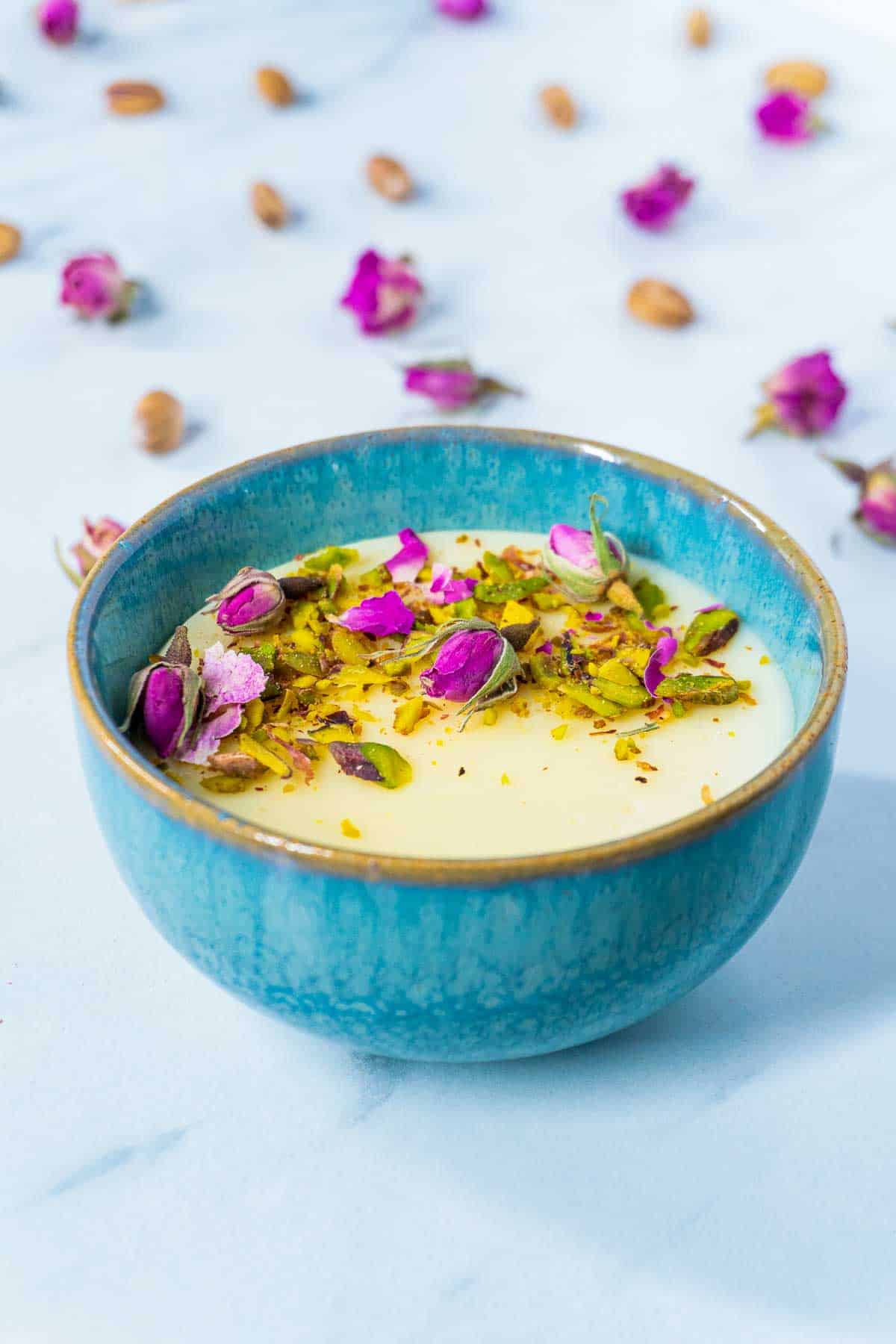
Tips
Mahalabia is generally a fairly simple recipe that’s hard to mess up (unless you completely overcook it!). It helps to cook the mixture over a low or medium heat using a heavy-bottomed pan or pot (not your typical thinner saucepan).
Stirring regularly, and making sure to reach the bottom of the pot when you do, will help prevent any unnecessary burning or clots.
If you don’t have wheat starch available, corn starch is an easy alternative, which results in a slightly smoother texture, while rice starch can be used for a more grainy consistency, and an ever so slightly quicker cook time. (There’s no correct or incorrect option here, it varies by tastes and locations.)
What kind of milk to use
When making this Middle Eastern milk pudding, it’s recommended to use whole milk. It is possible to swap for other types of milk (such as oat or almond milk), but it does significantly impact the quality of the final dish.
Can you make mahalabia with evaporated milk
A substitution you may encounter in the Middle East is switching out milk for evaporated milk (sometimes referred to as unsweetened condensed milk). This results in a richer and creamier Middle Eastern milk pudding recipe, but can easily stray into that overkill territory if you’re not careful.
Can you make mahalabia with condensed milk
Yes, this is a less common version of the dessert, but mahalabia can be made using (sweetened) condensed milk. If you’re planning to do this, remember to remove any other added sugar so that it doesn’t become sickeningly sweet. (I’d also consider using just a limited amount of condensed milk – up to one cup – mixed with three cups of regular milk.)
If you like what I’m doing here, and you want to help, why not go ahead and become a Patron? You can support Chocolates & Chai for as little as the price of a cup of coffee!
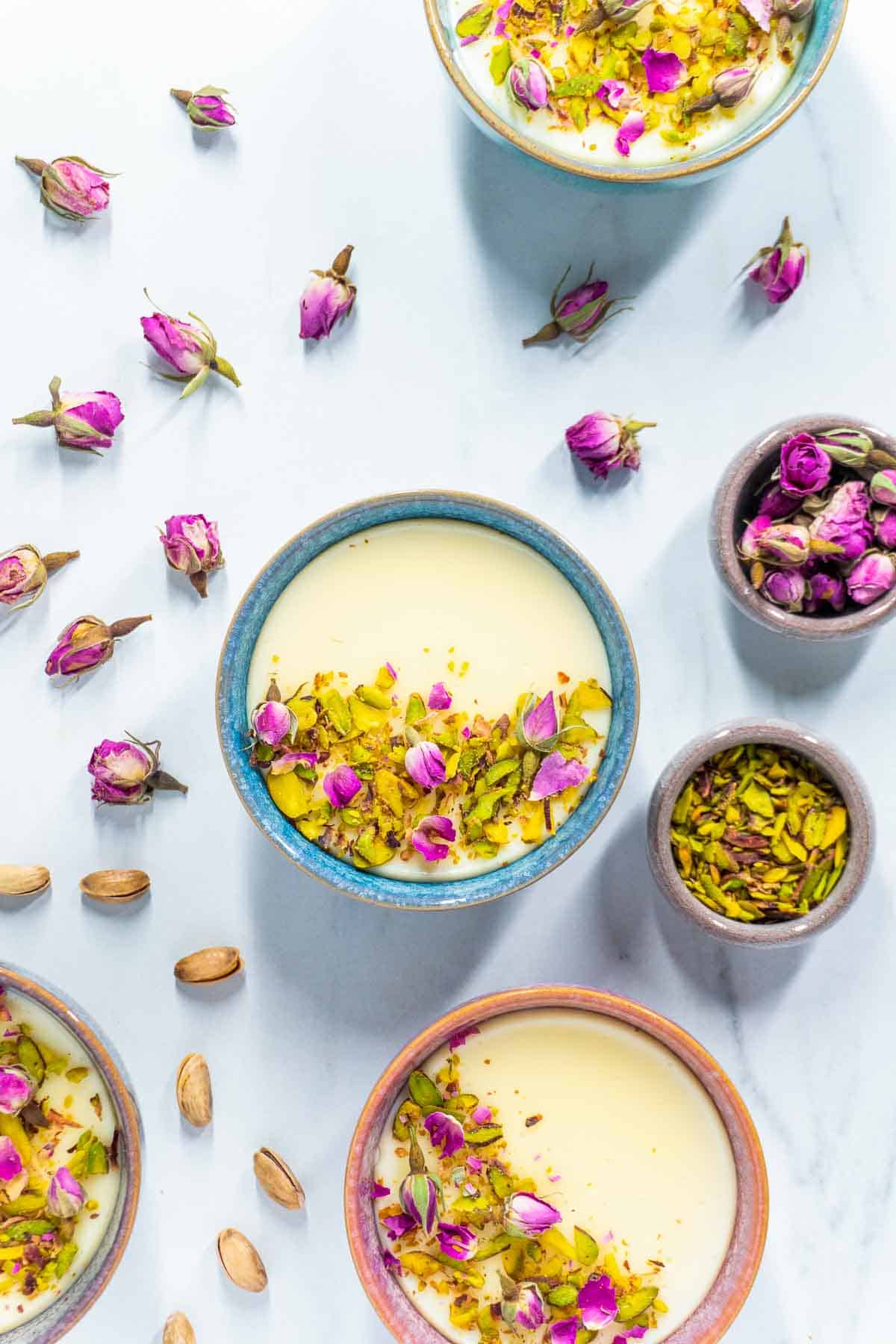
Variation ideas
Change up the flavor
The flavor of your mahalabia primarily depends on one particular ingredient. In this recipe, that flavour ingredient is the vanilla extract – I use vanilla because I tend to prefer a slightly sweeter mahalabia recipe, with a richer taste. However, you can swap it out for some other popular options:
- Orange blossom water
- Rose water (this also adds that lovely rose scent!)
- Almond Extract
Go nuts
While pistachios are probably the most popular garnish option, you can really mix things up by using different nuts – crushed almonds, walnuts, or pine nuts are all great options!
Toppings
Further changes to your toppings will begin to pull you further and further away from an authentic mahalabia recipe. But if that’s something that doesn’t bother you, there’s a wealth of options!
- A thick raspberry compote works exceptionally well as raspberry sweetness complements the basic muhalabia flavor.
- Ground cardamom is an option I’ve seen at dinner parties (but I must admit, I don’t particularly care for this).
- If you’re feeling a bit brave, top with shredded coconut for a distinctive finish.
- Dried fruit such as raisins are an easy and safe addition (depending entirely on whether you like raisins!).
- Really want to up the sweetness? Drizzle with a caramel sauce.
Storage
Mahalabia can be refrigerated in an airtight container for up to three days. If you happen to be the one in a million that prefers the warm version of this dessert, it can be reheated on the stove over a low heat. Otherwise, serve chilled for best results!
More Middle Eastern dessert recipes
- Kunafa
- Sutlac (Turkish Rice Pudding)
- Semolina Halva (with ice cream!)
Helpful tools
The link below is an affiliate link. This means that if you choose to purchase using it, I will receive a small commission (at no additional cost to you). These small commissions help keep Chocolates & Chai going. Thank you.
You don’t need any fancy kitchen gadgets for mahalabia (muhallebi), but it really does up your presentation to have some small bowls on hand.
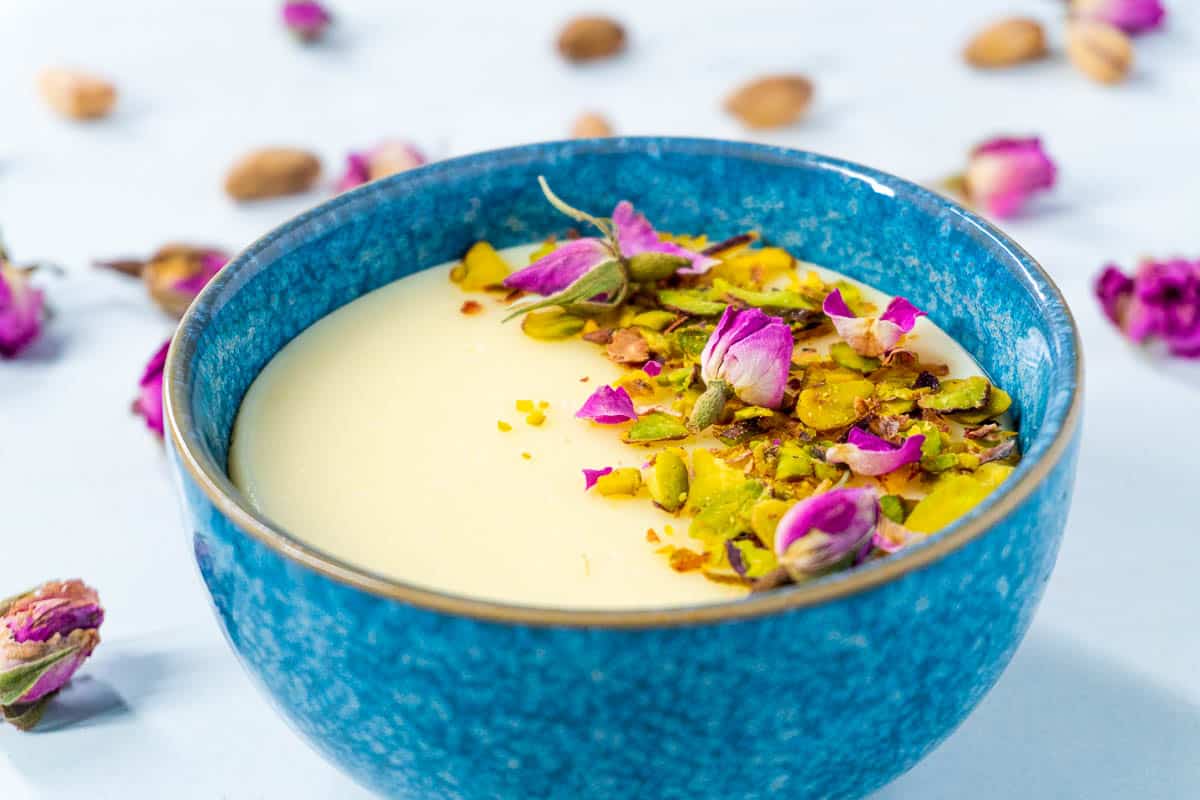
And that’s it for today, bestie. That’s pretty much everything you need to know about this Middle Eastern milk pudding. And now, it’s your turn, have you tried? What did you think? Let me know in the comments below.
Print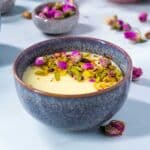
Mahalabia – Middle Eastern Milk Pudding (Muhallebi)
- Total Time: 15 minutes
- Yield: 5–6 dessert bowls 1x
- Diet: Vegetarian
Description
Mahalabia (aka Muhallebi) is an easy Middle Eastern Milk Pudding that comes together quickly using just a handful of ingredients. It’s a perfect make-ahead dessert!
Ingredients
For the mahalabia
- 4 cups whole milk
- 1 cup sugar
- 2 tablespoons flour
- 2 ½ tablespoons wheat starch
- 1 egg yolk
- 1 cup heavy whipping cream
- ½ tablespoons vanilla extract
For the garnish
- 3 tablespoons pistachios
- Rose petals
Instructions
- Add the milk, sugar, flour, wheat starch and egg yolk to a pot. Stir together until well mixed.
- Move the pot on to a medium heat, pour in the whipping cream and vanilla extract. Whisk the muhalabia mixture over the heat until a smooth consistency and pudding-like texture is achieved, approximately 10 minutes.
- Scoop the mahalabia pudding into bowls. Refrigerate for at least two hours (ideally, four or overnight). Garnish using pistachios and rose petals. Enjoy!
Notes
There are a lot of variations available for mahalabia recipes. From something as simple as changing the nuts and presentation to changing the type of milk or thickener used. If you’re interested in any of those details, everything is in the full written post (check the Tips and Variation Ideas sections)!
- Prep Time: 5 minutes
- Cook Time: 10 minutes
- Category: Dessert
- Method: Stovetop
- Cuisine: Middle Eastern

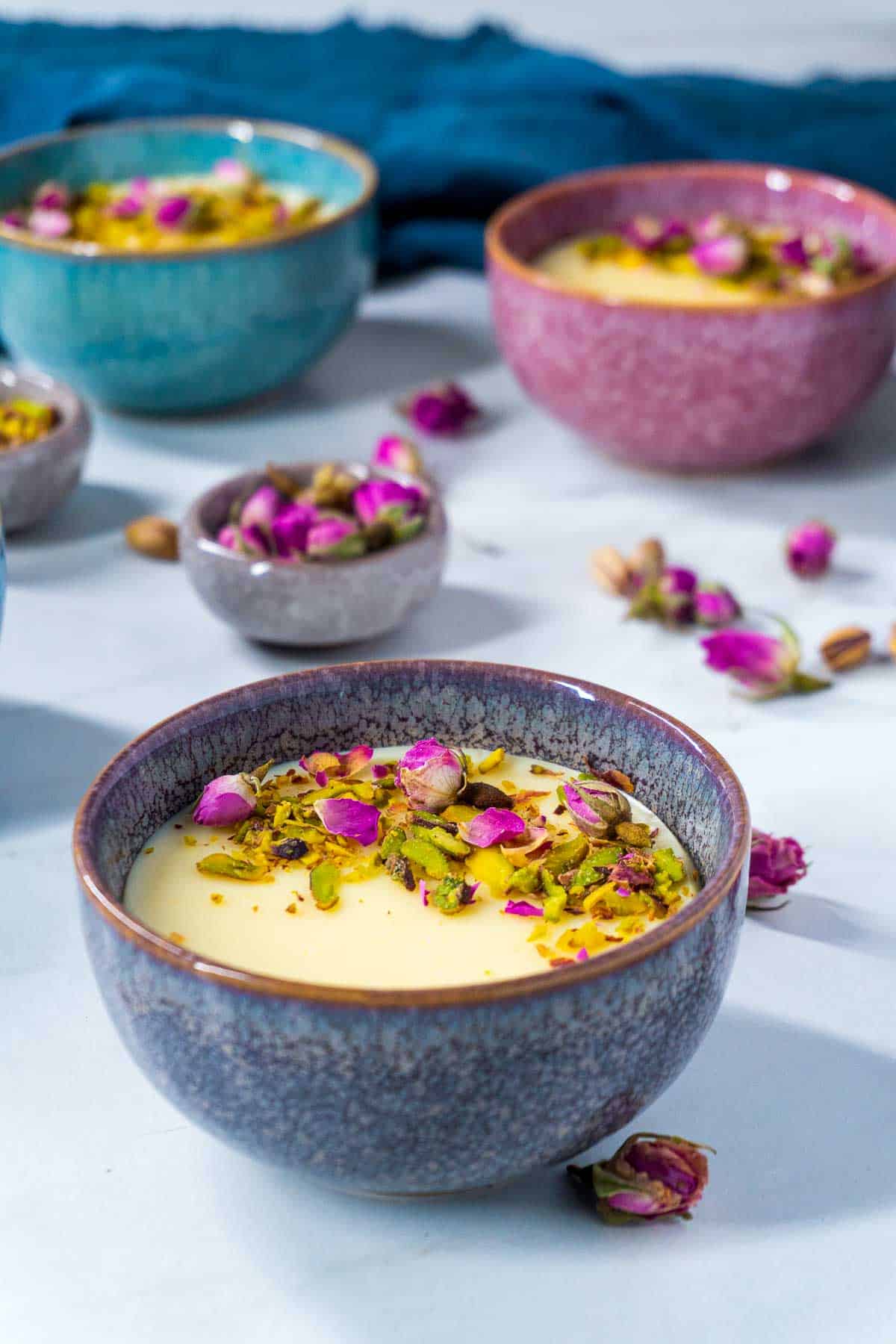
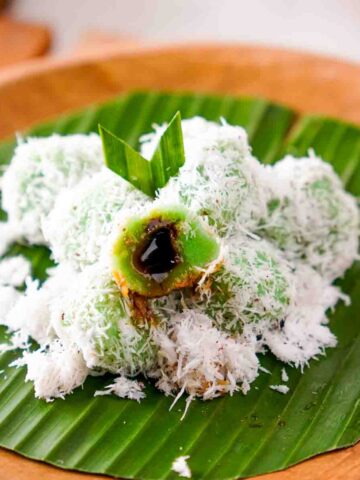
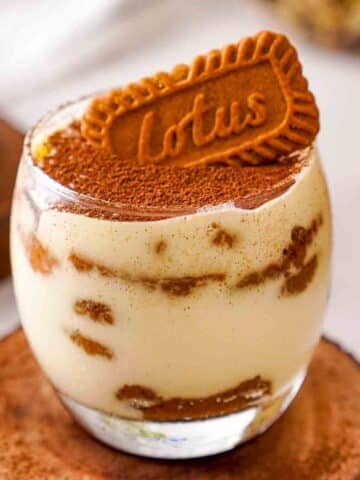
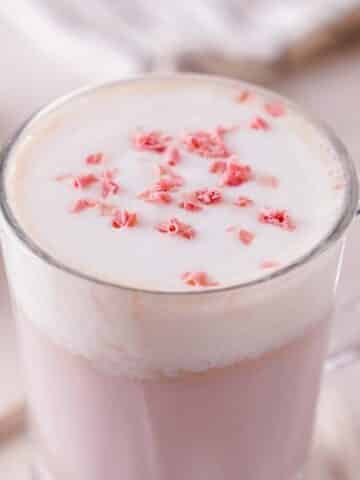
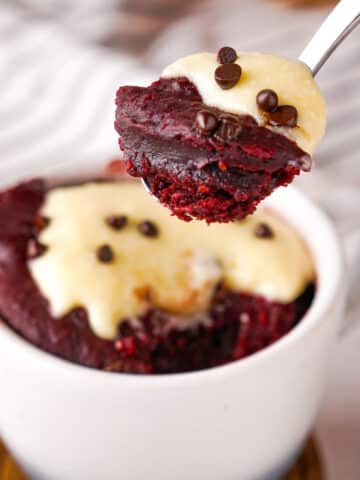
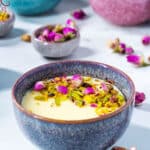
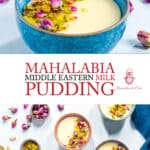
Afreen Mohamed
We made this for New Year’s eve. Wonderful recipe!
Greetings from New York city!